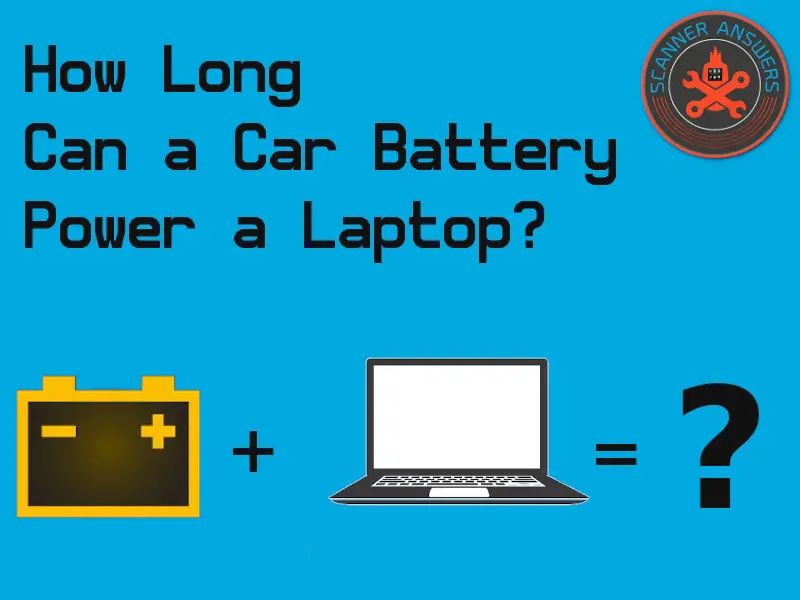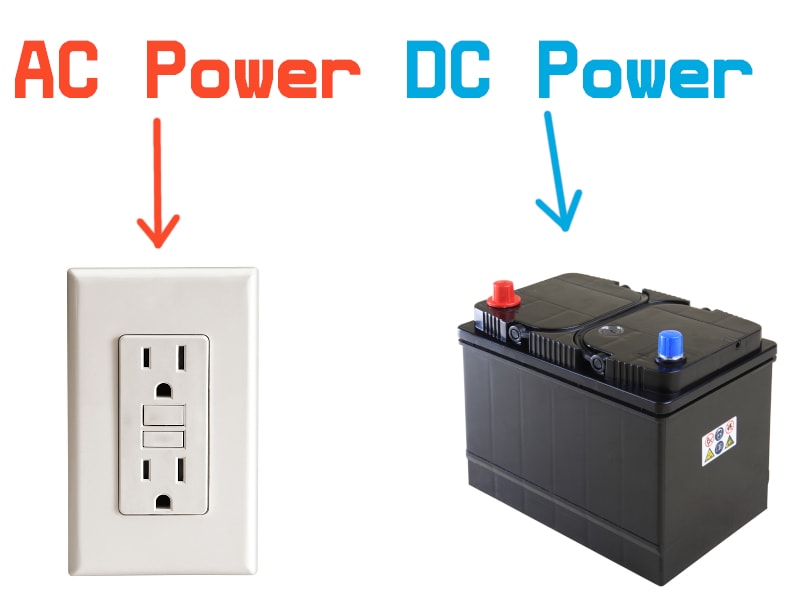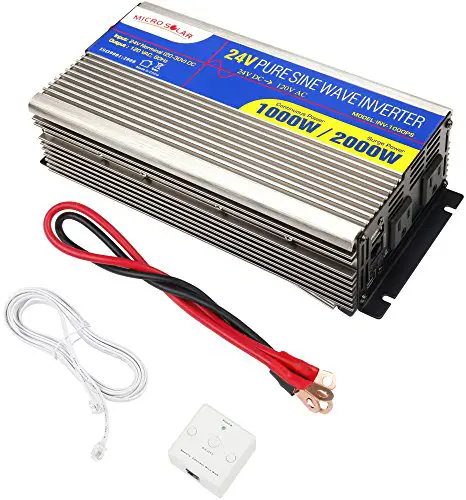Matt here, talking more about vehicle batteries. If you’ve been following us for long, you know we’ve been diving into various topics like hot car batteries, signs of a bad car battery vs alternator, and signs of a bad alternator. But today we’re taking a minute to discuss how long a car battery can power a Laptop.

But for how long can a laptop run if you hook it up to a car battery? The answer depends on a variety of factors, and we’ll discuss all of them here.
If you’re planning to run a laptop or any electronic device using your car’s battery, there are two ways you can do it.
- Use an inverter that converts direct current (DC) to alternating current (AC)
- Use a DC cable
Can you run a laptop off a car battery?
Yes, you certainly can.
But there are some things you need to know in this regard.
For starters, a typical car battery is classified as an SLI (Starting, Lights, and Ignition) battery, typically with thinner lead plates and a larger surface area. This allows the battery to conduct amperage at a faster rate, allowing it to exert maximum power for a couple of seconds when starting your vehicle.
For all intents and purposes, deep cycle (or marine) batteries are more ideal for running electronic devices like laptops, rice cookers, or charging smartphones. Marine batteries have thicker plates with less surface area. This allows the battery to withstand literally hundreds of discharging and charging cycles without degrading the unit.
However, since we’re talking about vehicles equipped with SLI starter batteries, we’ll stick to this topic for clarity’s sake. Regardless, it’s better to make it clear that deep cycle batteries are better suited for running laptops and electronic devices when you’re far away from an electrical socket.
Inverter versus DC chargers: which is better?
Before talking about inverters and DC chargers, it’s important to know the difference between
- Direct Current (DC)
- Alternating Current (AC)
In layman’s terms, AC is the power you get from a standard Home electrical outlet. On the other hand, DC power is usually provided by batteries.

With that being said, car batteries provide DC power while laptops work using AC power.
If you want to run a laptop using your car’s battery, you’ll need a power inverter that ‘converts’ DC to AC, allowing you to plug-in virtually any electronic device into your car’s battery. With a car power inverter, you can plug in laptops, TVs, DVD or Bluray players, and even gaming consoles even when you’re far away from home.
On the other hand, DC connections/chargers are more efficient than inverters. It’s also smaller and more compact than a comparable inverter. But in a DC charger, you won’t be able to use the supplied power cord of your laptop. Also, most DC connections are only good for specific devices or those with USB connectors, meaning you won’t be able to power up a TV and/or PlayStation with a DC connection.
How long can a car battery power a laptop?
The real answer depends on a couple of things including:
- Battery capacity / AMPs
- How much power you’re using
- General condition of the battery
It’s also worth noting that SLI batteries are rated in CCA (cold cranking amps) while Deep Cycle batteries are rated in AH (Amp Hours).
But there’s a way to simplify this:
Using this formula, you can get a general idea on how long you can use a laptop using power from your Deep Cycle battery:
10 x {battery capacity} / {load}) / 2
Let’s say your car battery has a reserve capacity of 100 amp hours and you have a 45-watt laptop. You’d get about 11 hours of run/charge time.
10 x {100 AH} / {45 watts} /2 = 11 hours
But at this time, your car battery will be almost empty or too weak to engage the starter motor. What we like to do is to divide the total hours by two. In this way, you can still start your vehicle after using your laptop.
11 hours / 2 = 5.5 hours
So a 45 watt laptop could theoretically run on a 100 AH Deep Cycle battery for about 5.5 hours.
But if you have a more powerful 65-watt laptop, the figures change drastically:
(10 x {100 AH} / {65 watts} / 2 = 7.7 hours
7.7 hours / 2 = 3.8 hours
Using a 65-watt laptop, you can use it for around 3.8 hours before running out of juice to start the motor in one click.
If you’re using a standard laptop and a 100 AH deep cycle marine battery, you can expect to get about 3-5 hours of charge or run time on your laptop
Will charging my laptop with the car’s engine off hurt the car’s battery?
If you repeatedly discharge a typical SLI car battery to below 90-percent, serious damage starts to occur from the inside. Remember, SLI batteries are not designed to endure repeated charging and discharging cycles, and it’s not the battery’s fault. Simply put, SLI batteries are not made that way, so charging a laptop with the car’s engine off will hurt your battery in the long run.
How to power an inverter with a car battery

Most car inverters sold today are powered by the vehicle’s standard cigarette lighter socket. All you have to do is plug it in, turn it on, and you can plug in your electronic devices to the inverter.
But there are other ways to hook up an inverter to your car’ battery. You can either use a 12-volt accessory socket or hook it up directly to the fuse panel. But for heavy-duty applications, you can power an inverter by hooking it up directly to the car battery.
Inverters come in many shapes and forms. In order to be sure, always read the instructions on your device.
Which type of battery is good for inverters?
Without a hint of doubt, deep cycle marine batteries are better for inverters. On the other hand, standard SLI car batteries are also ideal, but you’ll need to keep the engine running or idling top prevent battery discharge.
Conclusion
Using either an inverter or DC connection, you can power up various electronic appliances and/or gadgets using your car’s battery. However, there are limitations to this. You can juice up your laptop and run it using a car battery, but how long you can do it depends on the type of battery and the power consumption of your device.
More reading. Still having a tough time understanding all this stuff? I’d recommend checking out the guide that Robert wrote over at HomeBatteryBank. He gets more into the math and tech side. Revett on Qoura also shared a nice calculation using AH in a deep cycle battery that’s worth reading.